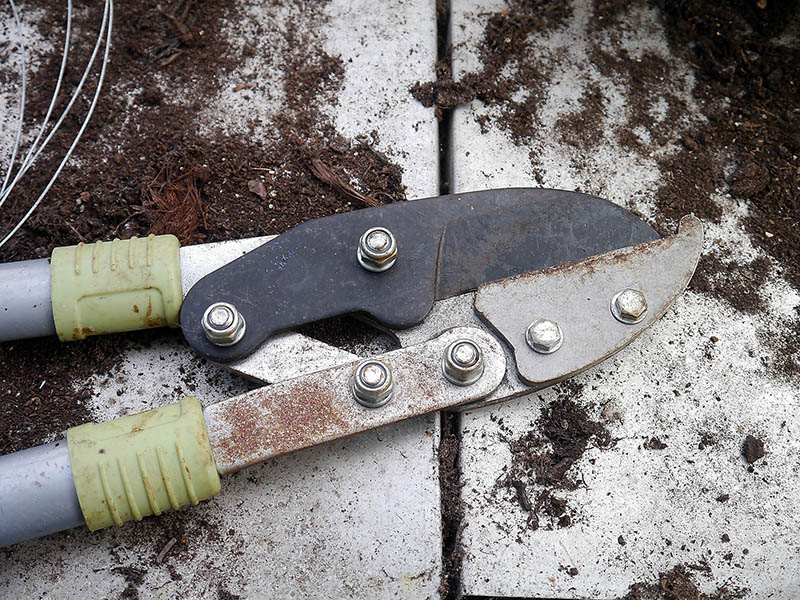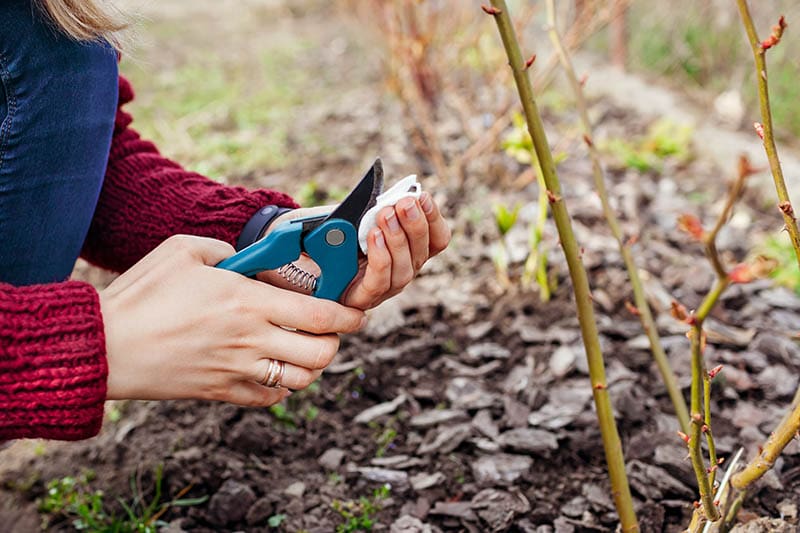When & How to Prune Boxwood: 8 Expert Tips
-
Pete Ortiz
- Last updated:

Boxwood is the name given to the Buxus genus of around 70 species within the family of Buxaceae. Introduced in the USA in the mid-1600s, they are slow-growing plants, rarely reaching 30 feet high, and commonly grown on hedges or part of a home’s landscape. They form impenetrable bushes which look impressive when maintained through pruning.
Pruning boxwood is not very complicated, but before you take a pair of hedge shears or hand pruners and start working on the humble plant, you need to know the following.
The 8 Expert Tips on When & How to Prune Boxwood
1. Timing Is Important
Boxwood can be pruned at any time of the year but for healthy bushes, avoid autumn. New shoots that will appear after autumn pruning will be severely affected by frost. This is because they may be too weak to survive through the winter.
Prune the plant in early spring to remove the yellow-brown winter color, any shoots killed by frost, and to prepare the plant for another growing season.
2. Select the Right Tools

Choosing the right tools plays two crucial roles in the pruning process.
First, it leaves behind clean cuts that heal faster and trigger new growths. Another reason is the tool is less strenuous on your arms.
The best boxwood trimming tools are as follows:
Secateurs
Secateurs crush and cut through stems around a pencil thick. They are widely used to trim back boxwood shoots in the early stages of growth, and due to their ease of use, most gardeners prefer them to other scissor-like tools.
Loopers
Great for pruning fruit trees, loopers can be used to cut back overgrown boxwood bushes with thicker stems of more than 2 inches.
Pruning saws
Saws are used for rejuvenation or renewal pruning, which involves cutting down a major part of the plant to almost the ground level, leaving a stump measuring less than 30 inches. The process also removes all the leaves and since you will be dealing with thicker and harder stems, get a pruning saw.
The saw comes in various styles and coarsely angled teeth to cut on both push and pull strokes. But choose bow-saws for branches more than five inches in diameter.
Long reach pruners
If your shrub is more than 7 feet in height, you don’t need a ladder to prune it. Long-reach pruners are like ‘giraffe’ secateurs with levers or ropes. The ropes are used to close and release the cutter as it snaps off small branches from the canopy of a tree or a tall boxwood.
3. Shape the Plant While It Is Still Young

Frequent pruning of young plants encourages lateral growth and branching, which leads to dense bushes. Despite numerous prunings per season, the plant will always bounce back with more fresh growths and hundreds of new smaller branches.
Use this vigorous growth stage to shape the plant into topiaries. Topiary is a gardening art that trains and clips the plants to form a clearly defined shape, such as terraces and animals. Pruning will maintain these shapes.
4. Reducing Pruning Frequency as the Plant Ages
Naturally, old boxwood has less foliage, stems are weaker and brittle, and have a slow growth rate. This is due to the aging process, depletion of nutrients, and prolonged attacks from pests and diseases.
If you want to maintain a stunning garden of aging boxwood, reduce pruning frequency to only when you feel it is necessary. You might as well do rejuvenation pruning, but the plant may not spring back to life if it is too old.
5. Mind Your Pruning Reasons

There are many reasons why homeowners prune boxwood.
To remove diseased or infected parts
Pruning removes dead or infected branches and stems from the plant to curb the spread of disease or create more growing space.
First, identify infected parts which are reflected in small and yellowing leaves. Discoloration and stunted growth are also other factors, whereas, for diseased parts, dried-up leaves and branches are telltale signs.
Depending on the size of the stem or branch, use a pair of loopers, and a pruning saw to remove the parts.
Restrict the plant’s size
Leaving the boxwood to grow and expand on its own will result in land wastage unless restricted by pruning. Target large lateral branches to restrict the plant within a small area. You might as well reduce its height by trimming off vertical branches.
Allow light to pass through
Carefully remove some of the boxwood’s under foliage to let light pass through the bush to the base of the plant. This destroys soil-borne pests and improves the growing conditions of smaller plants around boxwood.
Vigor
Vigorous growth is one of the top pruning reasons in leafy and flowering plants. As we have stated, rejuvenation pruning boosts growth by allowing water resources to be channeled to a few shoots. The shoots will grow faster and resist external attacks much better.
6. Consider the Type of Pruning
The practice of selectively removing some parts of the plants is not standardized. It takes many forms for different purposes.
Thinning
Thinning is the process of removing branches around the base at the point of origin or the stem. Its purpose is to reduce the concentration of leaves that are blocking sunlight and manage the size of the plant.
Raising
Though rarely done on boxwood, raising trims low-hanging branches to create space for pedestrians and vehicles.
Reduction
This process reduces the overall size of boxwood by more than 15%. In trees, it is mainly done to give space to power lines.
7. Disinfect Tools Before Moving to the Next Plants

As pruning tools cut through tissues, they pick up pathogens, which will be transferred to a healthy plant. Sanitize the tools before moving on to the next plant.
Products sold as rubbing alcohol have at least 70% of isopropyl alcohol to disinfect tools. This solution does not require prolonged soaking. Soak cotton in the solution and wipe on the tool. If that is a lot of work, a 10-seconds dip is enough.
Optionally, use a diluted solution of ethanol and bleach.
Conclusion
For it to be called a boxwood, it needs to take a box-like shape through pruning. Boxwood pruning is very easy when you know the type of pruning, select the right tool, and have reasons for doing so.
A pruning saw and a pair of secateurs are the go-to tools used to thin or reduce boxwood bushes for purposes of removing diseased parts, shaping, and controlling their expansion.
Featured Image Credit: Jorodin, Pixabay
Contents



